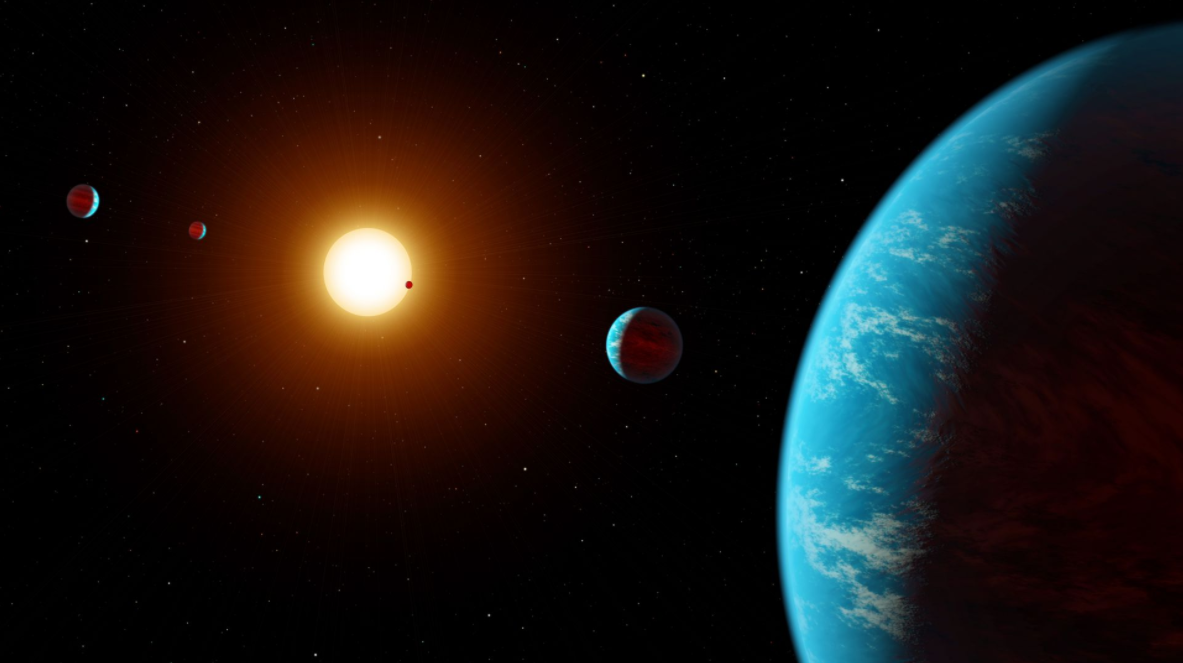
This article is the NetEase smart studio (public number smartman163) produced. Focus on AI and read the next big era!
[NetEase smart news January 14 news] Next-generation telescope powerful, will be able to scan millions of stars, and generate a large amount of data, and astronomers will be responsible for the use of these data for analysis. For astronomers, these data are too numerous to benefit data screening or modeling, so astronomers are turning to artificial intelligence for data processing.
Bottom line: In the past, algorithms have helped astronomers, but with the recent development of artificial intelligence, especially the improvement of image recognition capabilities and the increase in computing speed and cost, these technologies will be used by more researchers. use. Astronomer Derek Bussig from Florida Bay University said: "Because we can't handle these data streams effectively, we must change the original mode of operation."
For example: The 8.4-meter-long Mirror Telescope (LSST) built in Chile will use a car-sized digital camera to photograph the entire southern sky every few days. Overall, it is expected to collect more than 50 million gigabytes of raw data.
Innovation: Some new methods, "not existed five to ten years ago, they have either increased the speed of operation or improved the accuracy of operations," said Donald Lee Brown, a graduate student at the University of Kansas. A rough analysis of the results shows that in the past five years, the number of astronomical papers studying machine learning has increased five-fold.

How astronomers use artificial intelligence:
1) Coordination with a telescope
Tom Waitland of the Los Alamos National Laboratory said that large telescopes that observe the sky will observe "ephemeral celestial events" -- they are the source of new signals or "strange night sky."
Some of these events - such as gamma-ray bursts - have been described by Vestrand as "The Birth of a Black Hole" - lasting less than a minute. In such a short period of time, they need to be detected, categorized as real or false events (such as a flying airplane) and then used the most suitable telescope to align them for further investigation.
With a telescope such as the LSST, it is possible to detect 50,000 transient events every night. At the same time, hundreds of telescopes around the world will work together. "Artificial speeds have not kept pace with machines," Waitland said. "These jobs need to be done by machine docking."
2) Analysis of data
Within two years, every 30 minutes, NASA's new type of transit satellite from Japan will return the full picture of nearly half of the sky, providing astronomers with 20 million star information for observation.
"The future data on these stars will be more than we have known before," Bussy said. Next, artificial intelligence can categorize it, and if they have some similarities, put them together and hand it to humans to "look at 1% that artificial intelligence cannot recognize."
At that time, the idea was that artificial intelligence could classify data, combine data with similarities, and then pass it on to humans to analyze "1% that artificial intelligence cannot recognize." Lee Brown said: "Using neural network tools can get the temperature information or metal properties of stars, which is not only more accurate than our previous method, but also one billion times faster than before." Machine learning is now used to study black holes For the search for outer planets and for modeling the universe and its parameters. Bozesi said that in terms of processing data, artificial intelligence can perform tasks with consistent stability, and it is very difficult for humans to reach a certain level.
3) for mining data
Joshua Pique of the Space Telescope Science Institute said: "Most of the astronomical data we have obtained has been discarded, but some of these data contain deep physical information. We just don't know how to dig it out. Peek said that after producing these beautiful nebula images, the information in them is often discarded. He is developing a machine learning tool called a convolutional neural network that classifies images into different objects and extracts characteristic information from diffuse plasma and gas structures—the existence of most normal substances in the universe. status. Then, astronomers can study the similarities and differences between different structures in the universe.
An important question is: "How do you write software to discover things that you still don't know how to describe?" Vestrand asked. "A part of the unusual events is common, but what should be done for unusual events that are not common?"
And this will be where new discoveries really exist, because obviously you don't know what they are. â€
(Selected from: Axios Author: Alison Snyder compiled: NEW YORK intelligent participation: Sarah description link: https: //]
Orange Enzyme Into Beauty Revitalizing Mask 2
Remove dirt and excess oil within the pores, and remove aging skin, making skin fresh and clean. Mask hydrating agent, will lock the moisture in the membrane, soften cuticles and help the skin to absorb nutrients, Mask quickly soothe the skin, eliminate fatigue and restore the skin's luster and elasticity. Pristine liquid containing plant extracts to soften skin tissue, promote skin metabolism, for dry or dehydrated skin. White Water mask can thoroughly remove dead skin cells, while having clean water and instant whitening effect, make the skin smooth and reproduce young, white and transparent.
Companies registered capital of 35 million yuan, the end of 2014 the total assets of 48.69 million yuan, including fixed assets of 37.52 million yuan. The company's existing cooperation Orange cultivation base 7043.5 acres, the company production base is located in Jiangxi County Tech Industrial Park Chu Tan industrial area, covers an area of 120 acres, it has built a standard plant 9,000 square meters, Nissan 6000 kg Orange enzymes and other liquid enzyme products. Enzyme, known as enzyme, refers to a polymer substance having biocatalytic functionality. In the catalytic reaction system an enzyme, the reactant molecules are known as substrates, enzyme substrates by catalytic conversion to another molecule. Almost all cellular activity of enzymes involved in the process are required to improve efficiency. Similar to other non-biological catalysts, enzymes chemical reactions by lowering the activation energy to accelerate the rate of the reaction, most of the enzyme catalyzed reaction rate can be increased a million times; in fact, the enzyme is to provide an activation energy needs than another low way, so that more particles to have less than the activation energy of the reaction kinetic energy, thus speeding up the reaction rate. Enzyme as a catalyst, in itself is not consumed during the reaction, it does not affect the chemical equilibrium reactions. Positive enzyme catalysis, but also a negative catalytic effect, not only to accelerate the reaction rate, but also to reduce the reaction rate. And other non-living catalysts is different, having a high degree of specificity of enzyme, only a catalytic reaction or produce a particular specific configuration.
White Water Enzyme Mask,Removal Aging Skin Enzyme Mask,Rapidly Relieve Skin Enzyme Mask
guangdong ganzhou ningbo , https://www.tlqcjs.com